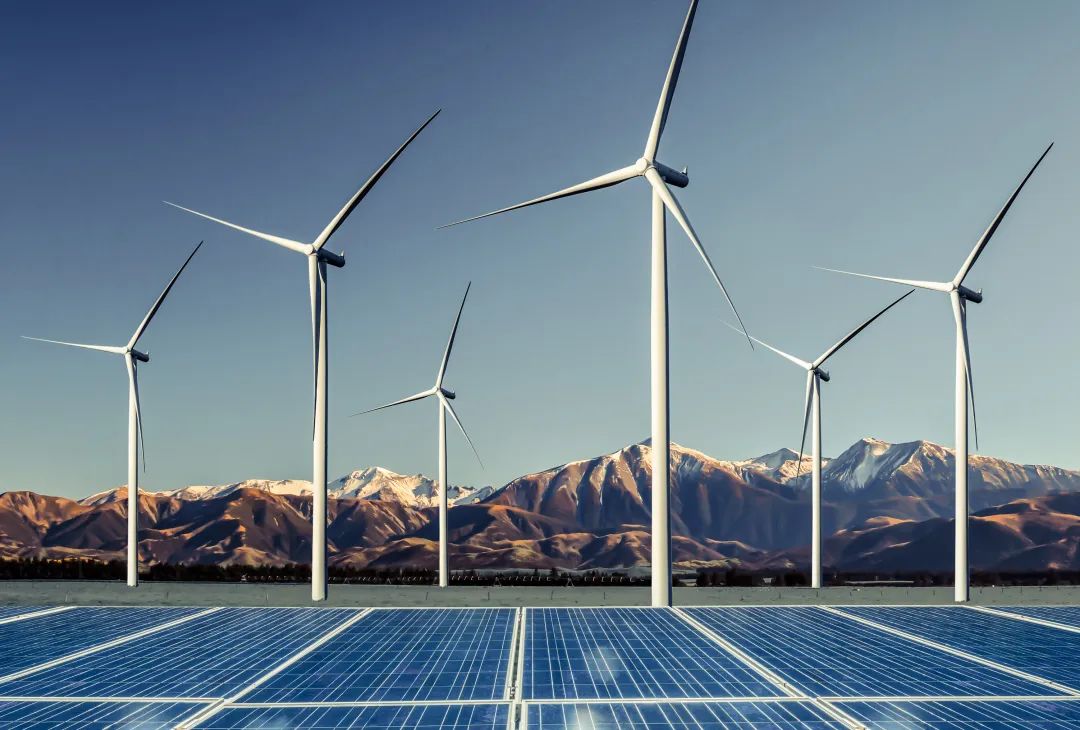Released by Alibaba Cloud Research Center
China is building policies and systems for carbon peaking and carbon neutrality goals to promote the implementation of the overall deployment of the goals.
On September 22, 2020, at the General Debate of the 75th Session of The United Nations General Assembly, China announced that its carbon dioxide emissions would peak by 2030, and it would achieve carbon neutrality by 2060. During the Two Sessions in 2021, carbon peaking and carbon neutrality were included in the Annual Government Work Report of China for the first time and put forward the guidelines for promoting industrial technology upgrades forced by the market. On October 24, 2021, the Working Guidance for Carbon Dioxide Peaking and Carbon Neutrality in Full and Faithful Implementation of the New Development Philosophy was officially released. Since the 1 in the 1+N policy system is for carbon peaking and carbon neutrality, the working guidance is the systematic planning and overall deployment of the major work of carbon peaking and carbon neutrality.
The Ministry of Science and Technology of China has fully implemented the decisions and deployment of the CPC Central Committee and the State Council on carbon peaking and carbon neutrality and regards accelerating technological innovation in carbon neutrality as an important task of the ministry currently. It is actively promoting three key tasks:
Achieving carbon neutrality is an extensive and profound systemic transformation in the economy and society. Technological innovation plays a vital and irreplaceable role during transformation.
To support and lead carbon peaking and carbon neutrality, scientific and technological innovation is mainly responsible for analyzing the current carbon emission status in China, determining the direction and path of technological development, and proposing systematic technical solutions.
First, scientific and technological innovation is used to analyze the current characteristics of carbon emissions in the nation from the supply side and the consumption side and helps build a carbon neutrality system in line with its national conditions.
Currently, China's total greenhouse gas emissions are large. Therefore, reducing emissions of carbon dioxide and non-carbon dioxide greenhouse gas (referred to as non-CO2 greenhouse gas) generated in activities related to energy and industrial process are facing huge challenges. In 2020, China's total annual net greenhouse gas emissions were about 12.6 billion tons of carbon dioxide equivalent. The main sources of emissions include power, industry, transportation, construction, and other sectors. On the supply side, the nation needs to vigorously promote clean electricity and fuels to realize the zero-carbon transformation of electricity and non-electricity energy supply structure. On the consumption side, industry, construction, transportation, and other sectors should change the form of energy utilization, accelerating the transition of energy consumption to electrification and low-carbon fuels. At the same time, those sectors should carry out raw material substitution and process reengineering for industrial processes and significantly reduce carbon emissions during production.

Second, China determines the technological path and development direction of carbon neutrality according to the characteristics of low carbon, zero-carbon, and negative carbon technologies in line with requirements for the carbon emission reduction of each stage.
Since the high carbonization of energy structure will remain for a period in China, energy-efficient and low-carbon technologies have high maturity and outstanding cost-effectiveness. Therefore, low-carbon technology should be given priority and vigorously promoted.
It will be inevitable for China to adjust its energy structure deeply in the future. The demand for zero-carbon power energy technologies (such as generating power with renewable resources and nuclear energy) and zero-carbon non-electric energy technologies (such as hydrogen energy and ammonia energy) have the potential for large-scale emission reduction and will be enhanced significantly. Zero-carbon technology will provide a major contribution to emission reduction as it matures and costs decline.

With the full application of low-carbon and zero-carbon technologies, it is predicted that by 2060 there will still be about 1.5 billion tons of carbon dioxide equivalent in terms of energy activities, industrial processes, and non-CO2 greenhouse gas emissions that cannot be reduced. Therefore, negative emission technologies will be the underpinning guarantee to offset emissions and achieve the carbon neutrality goal.
In general, the realization of carbon neutrality requires constructing a carbon neutrality technology system consisting of eight types of technologies, including energy-efficient, efficiency-improving, and low-carbon technology, zero-carbon power energy technology, zero-carbon and non-electric energy technology, fuels or raw materials and process substitution technology, non-CO2 greenhouse gas reduction technology, CCUS (Carbon Capture, Utilization, and Storage), BECCS (Bio-Energy with Carbon Capture Storage), and DAC (Direct Air Capture) technology, carbon sink, and integrated conversion and optimization technology.
Thirdly, China is expected to pay attention to systematic solutions to complex problems and strengthen the coupling optimization and synergy of the carbon neutrality technology and system.
The realization of carbon neutrality is a systematic project that should pay attention to system solutions based on a consideration of various factors.
From the perspective of system goals, it is necessary to take energy resource security, sustainable economic and social development, and solutions to energy transformation issues into account. From the perspective of industrial relations, it is required to provide technical support for key breakthroughs and coordinated emission reduction in the entire industry chain and across multiple sectors. From the perspective of technology application, it is needed to consider scenarios in different regions, industries, and fields to strengthen collective coupling and system optimization to achieve the synergy effect.
Since the international community adopted the Paris Agreement to address climate change, the carbon neutrality goal has gradually been integrated into the strategic decision-making of governments. More than 130 countries worldwide have put forward the carbon neutrality goal through legislation and the commitments of leaders.
China's goal of achieving carbon peaking by 2030 and carbon neutrality by 2060 is highly consistent with its goals to realize socialist modernization by 2035 and build a great modern socialist country by 2050.
According to the Outline of the 14th Five-Year Plan (2021-2025) for National Economic and Social Development and the Long-Range Objectives through the Year 2035 of the People's Republic of China, the per capita GDP will reach the level of moderately developed countries by 2035, and its GDP will double the figure of 2020. This means the average annual economic growth rate of economic development is not less than 5%. It is required to achieve high-quality carbon peaking during this period and a steady decline in emissions by 2035. In addition, the average annual decrease in carbon intensity cannot be less than 5%.
Achieving the goals of carbon peaking and carbon neutrality while ensuring economic growth means making 5% coordinate and promoting each other instead of being contradictory. The essence of the goals of carbon peaking and carbon neutrality is high-quality development. Economic and social development and fossil energy consumption have been decoupled and independent of each other. The realization of the goals requires the green transformation and upgrading of conventional industries and the cultivation of emerging industries. This process is promoting economic growth and improving quality and efficiency. The construction of the system of carbon neutrality technology will play an important role in supporting and leading the realization of the above process.
Challenges and opportunities are mutually transformed during the process of achieving the goals of carbon peaking and carbon neutrality.
In addressing the risks and challenges posed by climate change, the Stern Report (2006) argued that the issue was not whether we can afford to take action but whether we can afford the consequences of inaction. The realization of the goal of carbon neutrality requires a disruptive transformation in the energy system and industrial system. It is required to make arduous efforts with those huge challenges.
From the perspective of the stage of economic and social development, China is still in the stage of rapid development of industrialization and urbanization, and its total carbon emissions and intensity will continue to be high. In terms of the time from achieving carbon peak to carbon neutrality, China only has 30 years, which is shorter than the 40-70 years promised by developed countries, including European nations and the United States. From the perspective of technical reserves, currently, the development level of low-carbon, zero-carbon, and negative-carbon key technologies in China has issues supporting the realization of the carbon neutrality goal.
At the same time, carbon neutrality can release major development opportunities. It will drive countries to create new opportunities in low-carbon technology competition, industrial coordinated development, and employment. In addition, it will boost economic and social development and ecological environmental protection.
We should give full consideration to China's national conditions, leverage its institutional advantages, and formulate and implement scientific measures in a timely manner to build a technical system that supports carbon neutrality. With those efforts, China can give a proactive response to climate change, turn challenges into opportunities, and turn carbon resistance into a carbon dividend.
The relations between fossil energy and renewable energy should be re-examined in the process of achieving the carbon peaking and carbon neutrality goals.
With the rapid development of renewable energy technologies (such as photovoltaic and wind power and the continuous breakthroughs in energy storage technologies), it is a basic trend that the proportion of fossil energy in the primary energy supply system is gradually decreasing. However, from the perspective of energy security, it is difficult to completely get rid of fossil energy under the current technological conditions.
Since the adoption of the United Nations Framework Convention on Climate Change in 1992, the proportion of fossil energy in the global primary energy supply system has not changed significantly for nearly 30 years. It has remained around 80%.

Compared with the world average level, China has made positive progress in optimizing the energy structure. The proportion of non-fossil energy has increased from less than 8% to 15.9%, which has made a positive contribution to global emission reduction. However, the basic structure based on fossil energy has remained. The process of de-fossil energy in the social and economic system will take a long time. In this regard, we need to have a full understanding of the arduousness of changes in future energy structures.
Carbon neutrality is a systemic transformation in both economy and society, and changes in technology, policy, and market are indispensable.
Technically, scientific and technological innovation will play an important and irreplaceable role, and major breakthroughs and even disruptive technological innovation are required in some areas. In terms of policies, laws and regulations and systems, such as green finance and carbon tax, provide institutional guarantees for the realization of carbon neutrality. At the same time, those policies also have an incentive effect on low-carbon technological innovation. In the market, it is expected to establish and improve carbon trading mechanisms to promote carbon pricing in production decisions. The carbon price signal is used to guide enterprises to facilitate the R&D and application of low-carbon technologies.
China will promote structural transformation and in-depth emission reduction through comprehensive policies and measures. The combination of technology, policy, and market will provide an effective driving force for the realization of the carbon neutrality goal.
If a nation can take the lead in this transformation of carbon peaking and carbon neutrality, it can take the lead in reducing the cost of economic and social transformation and enhancing the global competitiveness of the industry, thus gaining the initiative in the fundamental transformation of the development model.
Content Source: Apsara Business Strategy Review

863 posts | 196 followers
FollowAlibaba Cloud Community - July 31, 2023
Alibaba Cloud Community - December 18, 2023
Alibaba Cloud Community - May 25, 2023
Alibaba Cloud Community - March 28, 2022
Alibaba Cloud Community - April 26, 2022
Alibaba Cloud Community - September 28, 2023

863 posts | 196 followers
Follow Retail Solution
Retail Solution
Alibaba Cloud enables digital retail transformation to fuel growth and realize an omnichannel customer experience throughout the consumer journey.
Learn More YiDA Low-code Development Platform
YiDA Low-code Development Platform
A low-code development platform to make work easier
Learn More Sports Solution
Sports Solution
From immersive stadiums to data analytics, our sports solutions empower teams, athletes, and fans through the digital transformation of the sports industry
Learn More Business Mid-End Solution
Business Mid-End Solution
This solution provides you with an enterprise-level omnichannel digital platform that gets your procurement and sales onto the same platform to enhance business competitiveness.
Learn MoreMore Posts by Alibaba Cloud Community